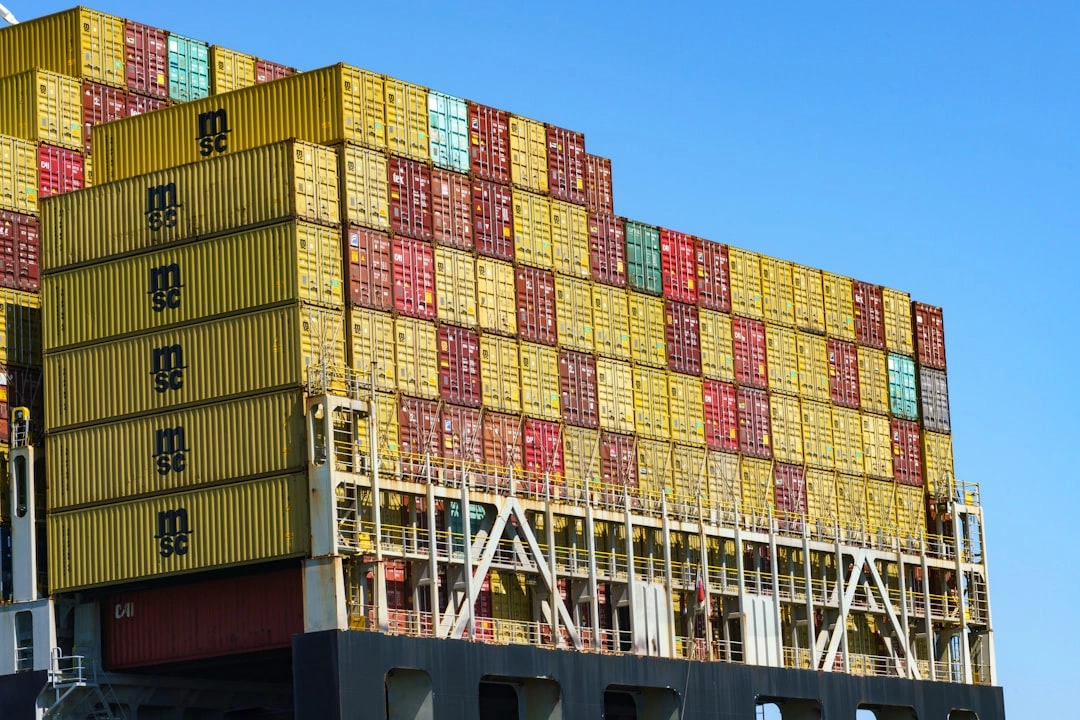In a nutshell:
- Accurate order volume forecasting in volatile markets is challenging due to fluctuating consumer demand and external factors.
- Advanced techniques like leveraging machine learning and external factors can improve forecasting accuracy.
- Predictive analytics and AI can help businesses stay ahead of market changes and make informed decisions.
- Implementing advanced forecasting solutions requires integrating technology, training staff, and evaluating ROI.
- Phased integration of new forecasting tools can minimize disruption and improve forecasting accuracy in uncertain markets.
Accurate order volume forecasting is already a hard skill to learn, but the volatile and uncertain markets of today’s economy make it that much more difficult. Fluctuations in consumer demand and external factors make it challenging to predict future orders with much precision.
Mastering forecasting like this is just too important not to try, though, so finding ways to make the process easier will pay off.
We’re exploring some advanced techniques for mastering order volume forecasting involatile markets, especially how machine learning and external factors can be leveraged to produce more accurate forecasts.
With these strategies, businesses can improve operational efficiency and enhance customer satisfaction. Stay ahead of the curve and learn how to navigate uncertain markets with confidence.
What is Order Volume Forecasting?
Order volume forecasting is the prediction of the quantity of goods and services that will be demanded by consumers in the future, taking into account factors such as promotions, sales, new product launches, and product discontinuations.
Advanced Techniques for Order Volume Forecasting
Change is the only constant in economics, so conventional forecasting methods can fall short for all sorts of reasons. To keep your business afloat amid uncertainty, you need to leverage advanced techniques for order volume forecasting.
These methodologies not only help enhance the accuracy of your forecasts but also offer actionable insights for strategic decision-making.
Leveraging Machine Learning for Forecasting
The powerful computational tools involved in machine learning provide significant improvements to traditional methods of order volume forecasting. Machine learning, a subset of artificial intelligence, involves the use of algorithms that can learn from and make decisions based on data.
In the context of forecasting, machine learning can sift through huge volumes of existing order data, identify patterns in customer purchasing behavior, and predict future order volumes accordingly. This approach goes beyond rudimentary demand prediction, offering a more nuanced understanding of order trends.
Incorporating External Factors Into Predictions
Businesses can greatly improve the accuracy of order volume forecasts by factoring in external influences. These may include economic indicators, industry trends, seasonality, and even geopolitical events.
One contemporary example would be a sharp rise in inflation triggering a dip in consumer spending, which in turn will impact the volume of orders. Neglecting these external factors can lead to misguided forecasts, giving you a less detailed and accurate view of how to order.
Strategies for Integrating External Data
Effectively incorporating external factors into order volume forecasting requires a well-structured strategy. This may involve regularly monitoring macroeconomic indicators, analyzing market trends, and staying updated with relevant news events. Tools like Google Trends or economic outlook reports can provide valuable insights for this purpose.
Machine learning can also analyze and integrate these external data points into order volume forecasts. The system can be trained to understand how different factors impact order volumes and use this knowledge to provide more accurate predictions.
A more personalized approach like this means that your predictions are always tailored to your industry and your business, making them theoretically the most accurate they can be.
Predictive vs. Reactive Forecasting
As businesses strive to stay competitive in volatile markets, moving from reactive to predictive forecasting methods is a major benefit to your operations.
While reactive forecasting involves making decisions based on past events and trends, predictive forecasting anticipates future market demand and trends using advanced technology and analytical techniques.
Our CEO and co-founder, Zohar Bronfman, explains the different roles of forecasts and predictions in business.
Focus on this fundamental shift in approach, which allows your team to proactively adapt to market changes, optimize supply chain management, and enhance decision-making processes. This approach increases operational efficiency, improves customer satisfaction, and results in a more profitable business.
Data-Driven Approaches for Accurate Forecasts
One of the most vital aspects of data is that it allows for historical context, offering insight into past trends that can often illuminate potential future patterns.
However, you must understand that while historical data is important, it is insufficient in dynamic, unpredictable markets with rapidly changing consumer demand and supply chain challenges.
That’s not the same as being useless, though, and there are still many ways data of all kinds can be used to predict order volumes accurately. Some creative ways to take a data-driven approach to your forecasting efforts include:
Utilizing Historical Data
Historical data can provide a foundation for forecasting models, offering relevant insights about past buying trends, seasonal changes, and more. Machine learning algorithms can comb through this data and discern patterns that humans might miss. An effective strategy is to use this data to generate a base forecast, which can then be adjusted based on predictive indicators.
But while historical data is a valuable resource, its importance should not be overstated. No one can truly predict the future, so paying too much heed to what happened in the past can cloud your perception of the present.
Relying solely on historical data can lead to inaccurate forecasts in an uncertain market with rapidly fluctuating conditions. Changes in consumer behavior, market dynamics, and external factors can drastically impact order volumes, and these changes may not be reflected in past data.
Predictive Analytics for Order Volume Forecasting
Predictive analytics is a game-changer in order volume forecasting. Through machine learning, statistics, and other data analysis techniques, predictive analytics can identify patterns in large datasets and forecast future events. Rather than focusing solely on historical data, these tools take in information from many different sources and make predictions based on the whole rather than any one aspect alone.
Used in conjunction with machine learning, predictive analytics can help a business stay ahead of rapid changes and proactively prepare for them. Imagine that a political upheaval or a sudden market shift is expected: these events can cause significant changes in consumer behavior, which can greatly affect order volumes.
Predictive analytics can help identify these potential changes before they occur, allowing businesses to adjust their strategies and remain resilient in the face of change.
Harnessing AI for Advanced Forecasting
Artificial intelligence (AI) is another great tool businesses can leverage to forecast order volume more accurately. AI, particularly when combined with machine learning, can provide more predictive power to your forecasting models. Through AI technologies, businesses can automate and streamline the forecasting process, reducing the margin of error and improving efficiency.
An AI-powered forecasting system can process vast amounts of data in real time, enabling it to identify complex patterns and trends that might go unnoticed with manual analysis. It can analyze and interpret these patterns to generate highly accurate forecasts.
An advanced AI system can also adjust and improve its models over time, learning from previous errors and continuously enhancing its predictive capabilities. This process is accomplished without direct human involvement beyond the initial stages and in oversight, freeing up precious time to handle more complex tasks.
The ability of AI to manage and analyze large datasets can be especially beneficial in volatile markets where traditional forecasting methods may fall short. In such situations, AI can deliver reliable forecasts that account for market volatility, allowing businesses to make more informed strategic decisions.
Whether it's identifying unexpected order volume spikes or predicting downtrends, AI provides a robust solution for navigating unpredictability and managing risk in uncertain markets.
Implementing Advanced Forecasting Techniques
Once you've grasped the concepts and techniques behind advanced forecasting, the next step is to put them into practice. The right technology solutions can make this a much smoother process. Here are some guidelines for how to effectively implement these new tools:
Technology Solutions for Forecasting
Emerging technology solutions offer predictive features based on real-time data and sophisticated algorithms. Adopting these solutions can improve understanding of market trends and dynamics, helping businesses adapt their strategies and brace for future changes.
Add-on features like artificial intelligence and advanced analytics can provide an added layer of precision to your forecasts, taking into account a wide range of variables that could impact order volume. These tools can also facilitate scenario planning, allowing businesses to plan for various potential outcomes and increase their preparedness for market volatility.
Software tools like Pecan AI offer advanced capabilities for order volume forecasting. These platforms utilize machine learning and predictive analytics techniques to generate accurate forecasts, even in volatile markets. They come with pre-built data connectors and data integration capabilities, allowing businesses to leverage their existing data resources effectively in new ways.
Integration of Advanced Forecasting Solutions
Facilitating the integration of advanced forecasting solutions into business systems is necessary for continued business success. The benefits of these technological solutions can only be fully realized when they are seamlessly integrated with the business's existing infrastructure.
This involves not only technical integration but should also include training staff to properly use these tools, establishing processes to ensure data accuracy and consistency, and setting up systems to review and improve the forecasting models regularly.
One of these advanced forecasting solutions to prioritize is the use of AI-based cloud software. This technology can effectively parse vast amounts of near-real-time data, refining forecasting models and strategies with unparalleled efficiency.
Furthermore, cloud-based solutions enable more seamless data sharing and collaboration, allowing multidisciplinary teams to work together to optimize forecasting outcomes.
Depending on a business's specific needs, different types of cloud software might be more applicable, so a careful evaluation of the tools available in the market, their features, and pricing should be done before integration.
Integrating in Phases
A phased approach to integrating advanced forecasting software solutions can benefit businesses. It involves introducing the new technology in stages, allowing the organization and its employees to adapt and adjust. This gives everyone a chance to more thoroughly understand the technology at every stage, lessening the stress associated with change and improving comprehension and usage.
In the initial phase, it's recommended to start with pilot projects or smaller use cases to test the effectiveness of the new forecasting tools. This allows you to determine their impact on the business processes, fine-tune the technology, discover potential challenges, and troubleshoot problems before a full-scale implementation.
Additionally, transitioning gradually ensures minimal disruption to the existing workflows and allows ample time for staff training. The approach also enables businesses to assess the ROI of the new technology at each phase, making necessary adjustments along the way to ensure everything is working as intended.
Ultimately, a phased approach to the introduction of these innovative forecasting models ensures a smooth transition and increases the likelihood of successful integration into the business processes, leading to improved forecasting accuracy and enhanced decision-making capabilities.
Data Integration Challenges and Solutions
While the benefits of implementing advanced forecasting solutions are considerable, businesses should also be cognizant of the challenges that can arise during the integration process.
In particular, integrating new forecasting tools may present data compatibility issues, especially when dealing with legacy systems or disparate data sources. To address this, businesses should consider working with a data integration platform that can facilitate seamless data transfer and transformation.
Data security might also be a concern when integrating advanced forecasting tools, especially those based on cloud infrastructure. Robust cybersecurity measures are essential to protect sensitive business and customer data from potential security threats. This involves adopting state-of-the-art data security solutions and ensuring regular updates and security audits to maintain high data protection.
Furthermore, businesses should pay attention to the user experience to successfully integrate advanced forecasting solutions. The new tools should be user-friendly and intuitive so that employees can quickly adopt them and maximize their benefits. Businesses may consider conducting training sessions or workshops to familiarize their staff with the new forecasting tools, encouraging a smooth transition and promoting a data-driven culture within the organization.
Common Questions About Forecasting
Are event and product information really that useful for order volume forecasting?
Event and product information are indeed highly valuable for order volume forecasting. These data points provide crucial context that can significantly impact consumer behavior and purchasing patterns. For instance, major events like holidays, sports tournaments, or local festivals can drive sudden spikes in demand for certain products. Similarly, product changes such as new features, packaging updates, or discontinuations can alter customer interest and ordering habits.
Incorporating this information into forecasting models allows businesses to anticipate and prepare for demand fluctuations more accurately. This proactive approach helps prevent inventory shortages or overstock situations, improving customer satisfaction and more efficient resource allocation.
By considering events and product changes, companies can make more informed decisions about production schedules, inventory management, and marketing strategies, ultimately optimizing their operations and potentially increasing profitability.
How can cross-team collaboration be helpful in the forecasting process?
Collaboration can be immensely helpful in the forecasting process by bringing together diverse perspectives and data sources. When various stakeholders — from retail partners to internal teams across sales, marketing, and operations — work together, they create a more comprehensive view of the factors influencing order volumes. This collaborative approach allows for the sharing of valuable insights that might not be apparent from a single department's viewpoint.
Collaborative forecasting enhances prediction accuracy by fostering open communication and data sharing. It enables the incorporation of real-time market intelligence, on-the-ground observations from partners, and cross-functional expertise.
This holistic approach improves the quality of forecasts and increases buy-in and alignment across the organization, leading to more effective implementation of inventory and production strategies based on these predictions.
Is it possible to generate accurate volume forecasts for seasonal products?
Generating accurate volume forecasts for seasonal products is indeed possible, though it presents unique challenges. The key lies in leveraging historical data and understanding the nuanced factors that drive seasonal demand fluctuations. Analysis of past sales patterns can help businesses identify recurring trends and cycles that help predict future demand more accurately.
Successful forecasting for seasonal products involves considering multiple variables beyond historical sales data. This includes factoring in promotional activities, changes in customer behavior during specific seasons, and external factors like weather patterns or economic conditions.
Combining these insights with advanced analytics techniques enables companies to create more robust and accurate forecasts, enabling them to optimize inventory levels, reduce waste, and ensure they're well-prepared to meet customer demand during peak seasons.
Master Order Volume Forecasting With Advanced Forecasting Technology Today
Mastering order volume forecasting in uncertain markets is not easy, but with the right techniques and tools, it becomes a more achievable goal.
Leveraging machine learning, incorporating external factors into your data, utilizing historical data, and implementing predictive analytics will all help businesses navigate the choppy waters of a volatile economy with a higher degree of confidence and precision.
Cutting-edge AI technology will become an essential tool in the arsenal of data leaders looking to stay ahead in uncertain markets. To experience the power of AI-driven order volume forecasting for yourself, schedule a demo with Pecan AI today.









